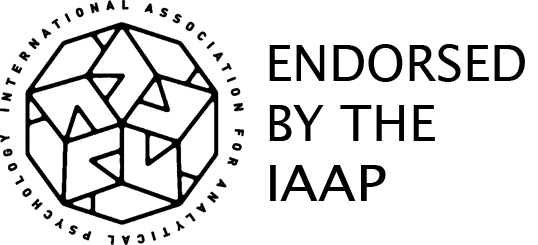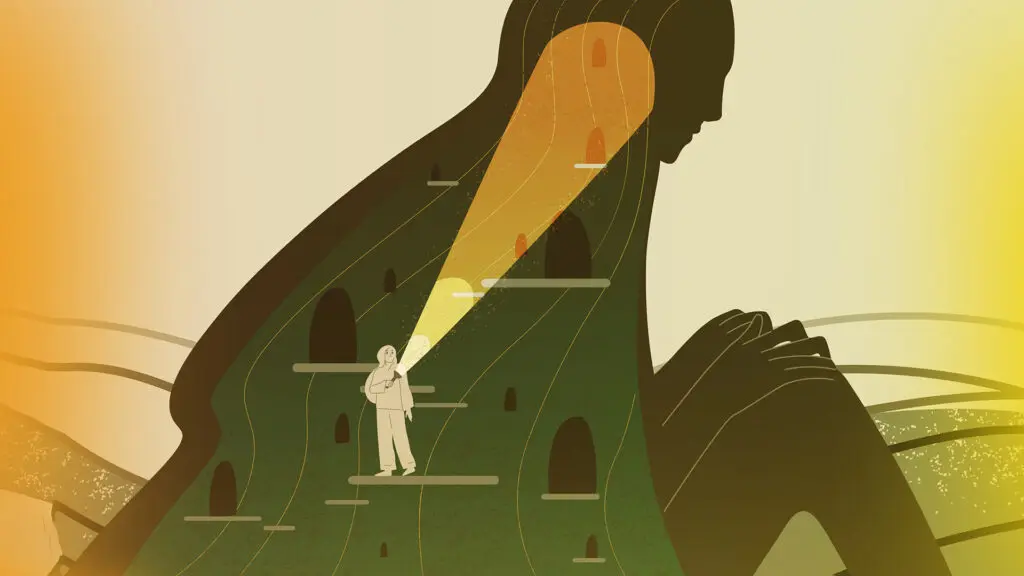This course explores the Psychology of Selves philosophy and its practical application, Voice Dialogue, as developed by Hal and Sidra Stone. Hal’s daughter, Tamar Stone, is our experienced and native guide through the terrain.
The Psychology of Selves model holds that we are all made up of many selves.The earliest selves are born to protect our vulnerable essence, these are our primary selves. Common primary selves are the Pusher, the Achiever, the Judge and the Critic. To do their work the primary selves repress or disown the selves opposite to them. Typically disowned selves are the Pleasure Seeker, the Rebel, the Ordinary, the Flirt, or the Playful Child. Tamar has created a spirited deck of 52 selves that describe these sub-personalities. She shows us some of the self cards in the course and a full list describing the 52 selves is included as a handy resource.
Tamar assures us that there is no such thing as a bad self. Even the annoying Critic becomes an ally when we accept its mission to help us fit in. The Procrastinator can help us incubate projects. Selves can seem “bad” when we identify with them to the exclusion of others or when they take over unexpectedly because they haven’t been heard. Watching Tamar find the value in each self helps us believe we can accept and integrate our many selves.
Voice Dialogue lets each part express its own personality, point of view, opinions and desires. Tamar shows us how an Aware Ego first honors and listens to one self, which may be driving our inner car, and then does the same with its opposite. The Aware Ego regains the driver’s seat of the car and while honoring all selves, freely chooses how to respond to the situation. Tamar inspires us to flex our free choice muscle.
Course Overview:
Class 1. Overview of the Human Psyche
Available Now
Tamar begins with an overview of the Human Psyche from the Psychology of Selves perspective. You will learn about the birth of your Primary Self System as a means of protecting the innate vulnerability that we are all born with. This class covers several typical primary selves; the Protector, the Achiever, the Pusher, the Critic, and the Rule Maker.
You´ll discover that for every primary self, there is an equal and opposite disowned self.
All the selves have a gift for us and Tamar encourages us to open the door to them as Rumi describes in his poem “The Guesthouse”.
Tamar explores the difference between the Operating Ego and the Aware Ego. The Aware Ego is not a self, it’s a process, a way of standing between opposite selves. We can strengthen the ability to hold this position. The Aware Ego gives us the most direct experience of true choice.
Class 2. Disowned selves
Available Now
In this class Tamar encourages us to genuinely ask our disowned selves what they have been trying to do for us. Rather than trying to get rid of a self that’s no longer helpful Tamar suggests that we ask that self how it would like to upgrade its job description.
Tamar gives us easy questions to ask to identify disowned selves in ourselves and others. Recognizing the gifts that disowned selves hold can be life changing.
She gives us examples of how to look at the people who trigger us or the people we overvalue for some disowned part of ourselves.
Class 3. Who’s driving your inner car?
Available Now
In this class Tamar entertains the question “Who’s driving your inner car?” and explains why you don’t want your inner selves behind the steering wheel. By giving voice to your primary/dominant selves, you can find out who’s been driving your inner car.
The six common Primaries are The Pusher, The Responsible, The Thinker, The Achiever, The Pleaser and The Vulnerable Child. Removing these selves from the driver seat does not remove them from the car. Exploring what the opposite self is striving for creates a conversation that includes all points of view.
Tamar introduces her evocative deck of cards from “Selves in a Box” as a helpful way to get to know which might be your primary and disowned selves. Tamar shows us a few of the cards and describes the selves they represent. A short description of these 52 selves and how over-identification with them can manifest in the body is included as a handout with the course materials.
Class 4. What is Voice Dialogue?
Available Now
Voice Dialogue is a technique for giving voice to the many selves inside us. Selves will communicate when they are talked to and listened to. Every Primary Self wants to be acknowledged for the role it’s played in our lives, often since childhood. Every Disowned Self yearns for our attention and a place at our inner table. Voice Dialogue is not formulaic, it’s unique to each individual.
Tamar starts her Voice Dialogue sessions getting to know the client’s Inner Protector. The Inner Protector is the first-born self. It has the essential role of protecting our innate vulnerability. The Protector oversees all aspects of our physical, emotional and financial environments. It’s important that the Inner Protector trusts the Aware Ego process of first separating, then integrating the other selves.
Class 5. Integrating Selves through an active Aware Ego Process
Available Now
In this class Tamar gives us a demonstration of how she moves from one of her primary selves to an opposite self, then into the Aware Ego. When we stand between a primary self and its opposite, we have a chance to experience what each self is saying and feeling without identifying with either part.
By standing between opposites we can learn to turn the volume of either self up or down. This way we can use the gifts of both in the right measure. This process is what we call strengthening the Aware Ego muscle. In time, our Aware Ego Process becomes the most direct experience of true choice.
Class 6. Moving from Relationship to Partnership
Available Now
Bonding patterns are the parent/child dance of relationships that form in our childhood. This occurs all the time in our relationships. We attract our disowned selves, bringing lovers, friends, colleagues and even neighbors who carry rejected parts of ourselves back into our lives. The opportunity is to identify the origin of the unconscious bonding pattern, which is vulnerability, and to recognize the selves involved.
Tamar reminds us that when we can communicate our vulnerability to another person we give that person the opportunity to be accountable. When people accept their mutual accountability and responsibility amazing things can happen between them. The clash of compensations and defenses can give way to tenderness and authenticity.
Class 7. Final Class
Tamar’s final class is about knowing the Selves and the Aware Ego Process where she engaged with participants.




